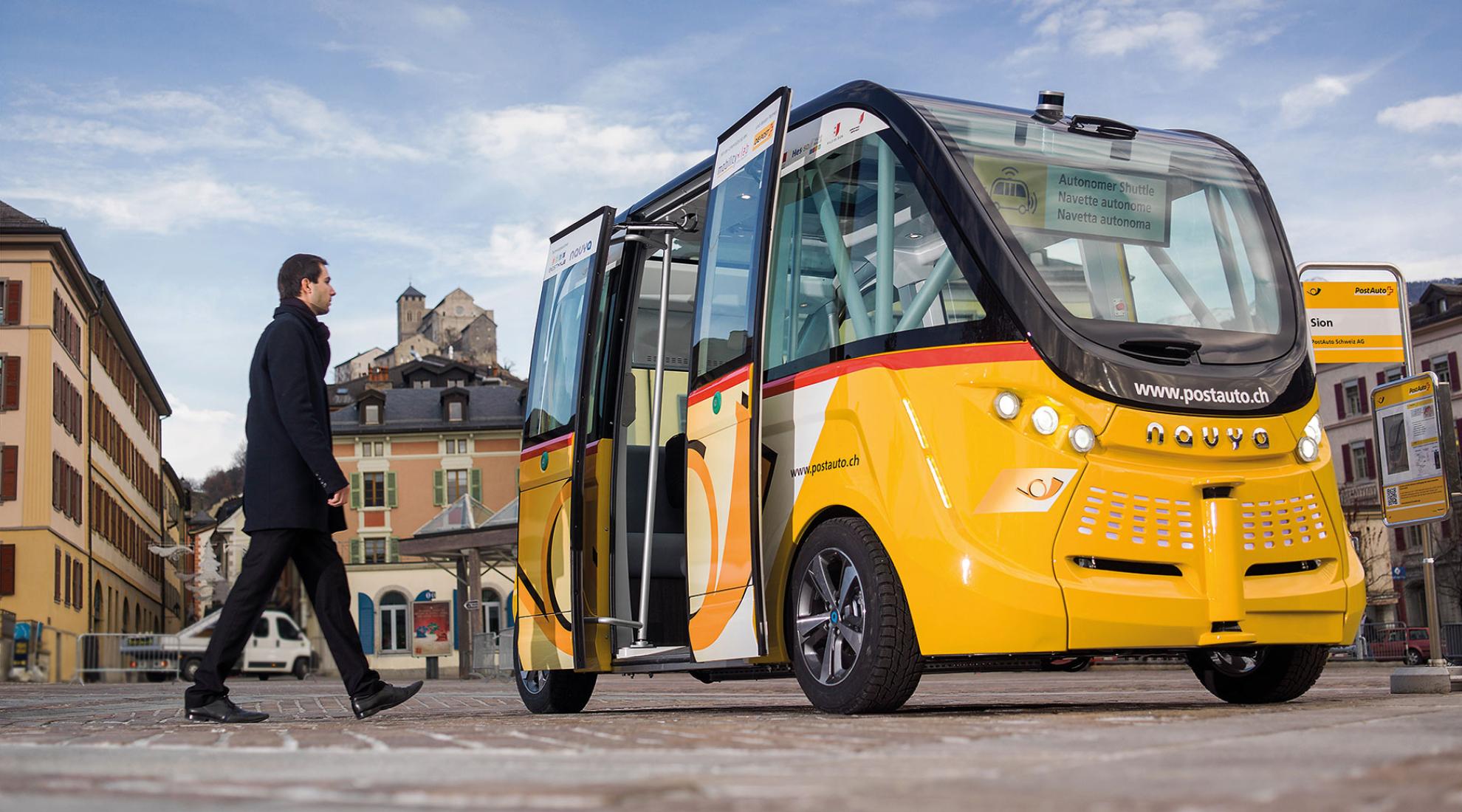Autonomous driving in the fast lane

The first autonomous bus shuttles ran in the Swiss city of Sion between 2016 and 2019.
Fully self-driving vehicles will one day be a reality. Switzerland is involved in a number of projects on this path, benefiting from the excellent cooperation between research, government and industry.
Two very special road users took to the streets of Sion in 2016. Locals had the opportunity to get from A to B in a self-driving bus that was driving in normal traffic. It was no coincidence that these were the world's first self-driving buses to be used in public transport.
Switzerland was quick to recognise the potential of self-driving cars, not least because 95% of all road accidents are caused by human error, according to the Swiss Council for Accident Prevention (BFU). As vehicles become more automated, they can compensate for such errors. In addition, it may make driving more comfortable and more enjoyable, and can improve traffic flow.
Close cooperation between research, politics and industry
Numerous research projects and spin-offs from Swiss universities made the theoretical use of autonomous vehicle systems possible at an early stage. However, for the Swiss spirit of innovation to become reality, support from government and industry is needed alongside research. The Swiss Federal Roads Office, which is responsible for regulating vehicles on Swiss roads, has paved the way by making autonomous driving a priority and approving pilot projects since 2015.
There is great interest in the use of autonomous vehicles, particularly in the public transport sector. The very first pilot project in Sion in 2016 was carried out by PostBus, Switzerland's largest bus operator with the distinctive yellow buses.
Paving the way
In Switzerland, only partially automated driving with human assistance is currently permitted, while fully autonomous driving is still banned. However, as experience and technology improve, Switzerland plans to gradually liberalise the rules. The aim is to have fully automated and electronically networked vehicles for passenger and freight transport in Switzerland by 2050.
A new ordinance on automated driving in Switzerland provides an important legal basis. The new regulation stipulates that vehicles with automation levels 3 and 4 will also be allowed to drive on Swiss roads in the future. This would mean that drivers would be able to take their hands off the wheel after activating the automation system and would no longer have to constantly monitor the traffic or the vehicle. The regulations are expected to come into force at the beginning of 2025.
Pilot projects under one roof
The Swiss Association for Autonomous Mobility is the key platform that brings together all the major transport and research organisations in this field in Switzerland and implements joint best-practice projects. Eleven pilot projects are currently underway in Switzerland and can be viewed on the association's website. These range from driverless logistics using the Embotruck to Europe's first driverless grocery delivery vehicle, LOXO, and the use of battery-powered, driverless and mobile-monitored dump trucks.
Many more pilot projects are likely to be added over the next few years, bringing the future of fully driverless vehicles closer.




